The Rise and Decline of the "SUV".
Some time ago, on this transportation obsessed blog, I published this item:


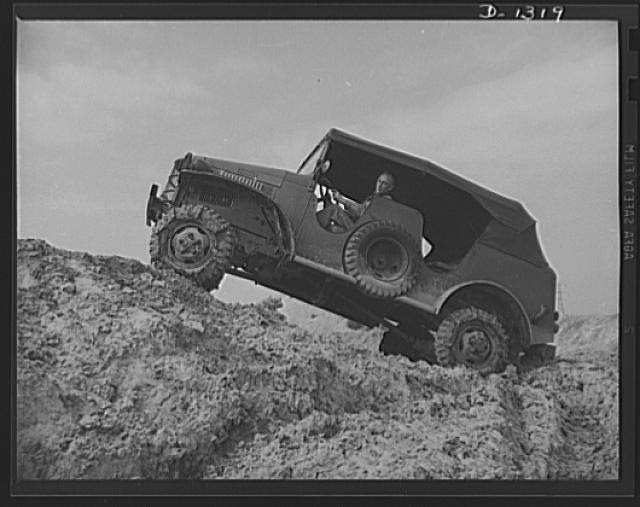
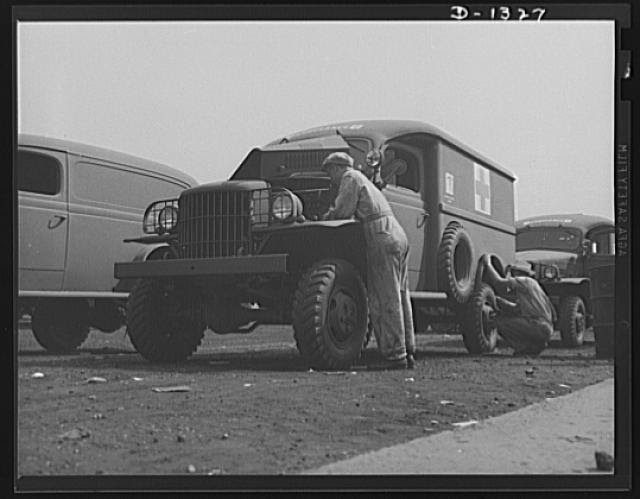
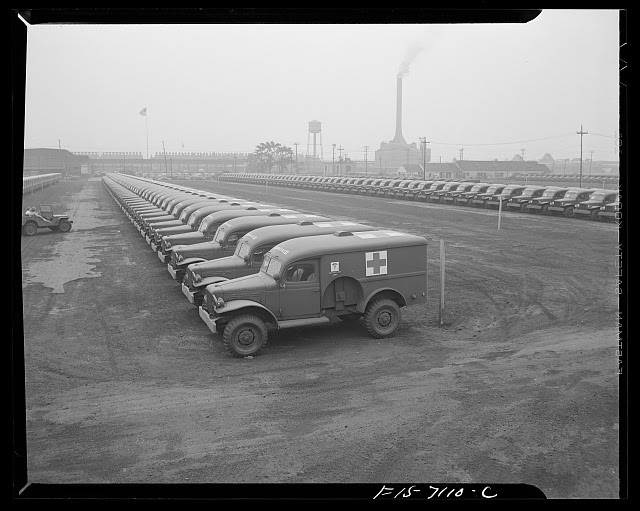
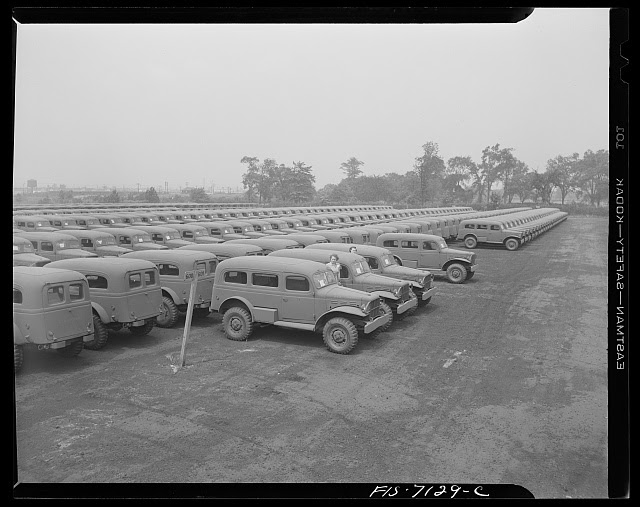

Lex Anteinternet: SUVs before SUVs:
A 1962 Dodge Power Giant Carryall. Not mine, I saw it for sale the other day while driving through town. It appears in nice shape, and still features bias ply tires. This is a D100 Carryall, which means its rated at 1/2 ton, although it has a two speed rear axle. Of course, I don't know anything about it or what is, or isn't original. It looks pretty original, however.
Anyhow, it's interesting how SUVs are supposed to be a modern concept, with the Chevrolet Suburban supposedly sort of ushering them in. But Suburban's themselves go way back, and before them were vehicles like this Dodge Carryall. Carryalls, in fact, go all the way back to World War Two.
Of course, these aren't easy to drive. It has a manual transmission and armstrong steering. And, of course, conventional hydraulic brakes. Not something a soccer mom, or dad, would probably drive. Still, it's interesting to note how far back the concept of a full sized 4x4, built on a truck frame, goes. About as far back as 4x4 trucks themselves.
Since that time, I posted a comment on trucks or SUVs on the M K Wright blog, and Jenny, who has a couple of excellent blogs herself, including the 1870-1918 blog, noted that she'd be interested on how SUVS became the sort of bloated light duty vehicles that they've become. To a fan of 4x4s, which I obviously am, that question struck a chord and so I'm back on the topic.
I guess to start off on this, we'd have to define what an SUV actually is. The term isn't really that old in comparison to the vehicles that arguable fit the definition. SUV, as we know, stands for Sport Utility Vehicle. But what's that?
It's a bit hard to say. When the term first was used, it seemed to fit any 4x4 that was a light carryall, but over time it expanded to include all the traditional carryalls and perhaps even things like Jeeps. So, here we'll take a look at that class of vehicle, that being the 4x4 that isn't a pickup, but is designed to carry multiple passengers.

M151A1 Jeep in the foreground, with self propelled artillery in the background, South Korea, 1987. The M151 was the last of the US military Jeeps. Today, the Jeep is basically almost back to a single manufacturer after having had as wider run at one time.
If we look at it that way, I suppose the Jeep, which we've discussed here before several times. Probably the last time I looked at them at length was in this post:
Jeep
I've owned Jeeps twice. My first car, a 1958 M38A1 Army Jeep. In the words of Iris Dement, "it turned over once, but never went far."*My very first vehicle was a Jeep. I bought it for $500 with money I had earned from a summer job. I was 15 at the time, and not old enough to actually drive, but I still had it when I turned 16.The engine was a mess, in need of rebuilding or replacement, and as you can see, the prior owner had hit a tree with it. As the engine was so worn out, it burned nearly as much oil as gasoline, and I sold it when I was 16 and bought a Ford F100 to replace it.My second Jeep was a 1946 CJ2A, the very first model of civilian Jeep. I kept it for awhile, but ultimately when my son was small, I sold it too. The CJ2A, particularly ones made in the first couple of years of production, was nearly unchanged from the World War Two Army 1/4 ton truck that gave rise to the species, and indeed, the model I had, had some parts commonality otherwise unique to the Army Jeeps of the Second World War.Depiction of Jeep in use on Guadalcanal, bringing in a KIA.Jeeps got their start in that role, as a military vehicle, a 1/4 ton truck, entering service just prior to World War Two. Bantam, a now extinct motor vehicle manufacturer, gets a lot of credit for the basic design, and indeed the Bantam Jeep did enter U.S. and British service.Bantam Jeep being serviced by Army mechanic. The Bantam was actually lighter than the Willys Jeep.But it was Willys, with larger manufacturing capacity, that really gets credit for the design. It was their design that became the Jeep, although Ford made a huge number of Jeeps during the Second World War as well.Coast Guard patrol with Jeep. The Coast Guard also had mounted patrols during the Second World War, acquiring horses and tack from the Army.American and Australian troops with Jeep serving as a field ambulance.Jeeps became synonymous with U.S. troops during World War Two. Indeed, there's a story, probably just a fable, of a French sentry shooting a party of Germans who tried to pass themselves off as Americans, simply because the sentry knew that a walking party of men could not be Americans, they "came in Jeeps." A story, probably, but one that reflected how common Jeeps were and how much they were admired by U.S. forces at the time. It's commonly claimed by some that Jeeps replaced the horse in the U.S. Army, but that's only slightly true, and only in a very limited sense. It might be more accurate to say that the Jeep replaced the mule and the horse in a limited role, but it was really the American 6x6 truck that did the heavy lifting of the war, and which was truly a revolutionary weapon.None the less, the fame of the Jeep was won, and after the war Jeeps went right into civilian production. For a time, Willys was confused over what the market would be for the little (uncomfortable) car, and marketed to farmers and rural workers, who never really saw the utility of the vehicle over other options. Indeed, for farmers and ranchers who needed a 4x4, it was really the Dodge Power Wagon that took off. The market for Jeeps was with civilian outdoorsmen, who rapidly adopted it in spite of the fact that it's very small, quite uncomfortable, and actually, in its original form, a very dangerous vehicle prone to rolling. Still, the light truck's 4x4 utility allowed sportsmen to go places all year around that earlier civilian cars and trucks simply did not. The back country, and certain seasons of the year, were suddenly opened up to them. For that reason, Jeeps were an integral part of the Revolution In Rural Transportation we've otherwise written about. You can't really keep a horse and a pack mule in your backyard in town, but you can keep a Jeep out on the driveway.Not surprisingly, Willys (and its successor in the line, Kaiser) soon had a lot of competition in the field. The British entered it nearly immediately with the Land Rover, a light 4x4 designed for the British army originally that's gone on to have a cult following, in spite of being expensive and, at least early on, prone to the faults of British vehicles. Nissan entered the field with the Nissan Patrol, a vehicle featuring the British boxiness but already demonstrating the fine traits that Japanese vehicles would come to be known for. Toyota entered the field with its legendary Land Cruiser, the stretched version of which I once owned one of, and which was an absolutely great 4x4. Indeed, their smaller Jeep sized vehicle, in my opinion, was the best in this vehicle class. Ford even entered the field with the original Bronco. Over time, even Suzuki would introduce its diminutive Samurai.So, what's happened here to this class of vehicles anyway?Recently, for reason that are hard to discern, I decided to start looking once again for a vehicle in this class. I know their defects. They are unstable compared to trucks, and they don't carry much either. But there is something about them. Last time I looked around there were a lot of options, and costs were reasonable for a used one. Well, not anymore.I don't know if its the urbanized SUV that's taken over everything. But whereas once a fellow looking for a Jeep like vehicle could look for Jeeps, Land Cruisers, Land Rovers, Samurais, Broncos and International Scouts, now you are down to Jeeps, the Toyota FJ Cruiser or the soon to be extinct Land Rover Defender. The Defender is insanely expensive, but the Jeep and Cruiser sure aren't cheap. Even used vehicles in this class now command a crazy price. I'm actually amazed I see so many around, given that most people don't use them for what they are designed for, and they're so darned expensive.
My first car, a 1958 M38A1 Army Jeep. In the words of Iris Dement, "it turned over once, but never went far."*My very first vehicle was a Jeep. I bought it for $500 with money I had earned from a summer job. I was 15 at the time, and not old enough to actually drive, but I still had it when I turned 16.The engine was a mess, in need of rebuilding or replacement, and as you can see, the prior owner had hit a tree with it. As the engine was so worn out, it burned nearly as much oil as gasoline, and I sold it when I was 16 and bought a Ford F100 to replace it.My second Jeep was a 1946 CJ2A, the very first model of civilian Jeep. I kept it for awhile, but ultimately when my son was small, I sold it too. The CJ2A, particularly ones made in the first couple of years of production, was nearly unchanged from the World War Two Army 1/4 ton truck that gave rise to the species, and indeed, the model I had, had some parts commonality otherwise unique to the Army Jeeps of the Second World War.Depiction of Jeep in use on Guadalcanal, bringing in a KIA.Jeeps got their start in that role, as a military vehicle, a 1/4 ton truck, entering service just prior to World War Two. Bantam, a now extinct motor vehicle manufacturer, gets a lot of credit for the basic design, and indeed the Bantam Jeep did enter U.S. and British service.Bantam Jeep being serviced by Army mechanic. The Bantam was actually lighter than the Willys Jeep.But it was Willys, with larger manufacturing capacity, that really gets credit for the design. It was their design that became the Jeep, although Ford made a huge number of Jeeps during the Second World War as well.Coast Guard patrol with Jeep. The Coast Guard also had mounted patrols during the Second World War, acquiring horses and tack from the Army.American and Australian troops with Jeep serving as a field ambulance.Jeeps became synonymous with U.S. troops during World War Two. Indeed, there's a story, probably just a fable, of a French sentry shooting a party of Germans who tried to pass themselves off as Americans, simply because the sentry knew that a walking party of men could not be Americans, they "came in Jeeps." A story, probably, but one that reflected how common Jeeps were and how much they were admired by U.S. forces at the time. It's commonly claimed by some that Jeeps replaced the horse in the U.S. Army, but that's only slightly true, and only in a very limited sense. It might be more accurate to say that the Jeep replaced the mule and the horse in a limited role, but it was really the American 6x6 truck that did the heavy lifting of the war, and which was truly a revolutionary weapon.None the less, the fame of the Jeep was won, and after the war Jeeps went right into civilian production. For a time, Willys was confused over what the market would be for the little (uncomfortable) car, and marketed to farmers and rural workers, who never really saw the utility of the vehicle over other options. Indeed, for farmers and ranchers who needed a 4x4, it was really the Dodge Power Wagon that took off. The market for Jeeps was with civilian outdoorsmen, who rapidly adopted it in spite of the fact that it's very small, quite uncomfortable, and actually, in its original form, a very dangerous vehicle prone to rolling. Still, the light truck's 4x4 utility allowed sportsmen to go places all year around that earlier civilian cars and trucks simply did not. The back country, and certain seasons of the year, were suddenly opened up to them. For that reason, Jeeps were an integral part of the Revolution In Rural Transportation we've otherwise written about. You can't really keep a horse and a pack mule in your backyard in town, but you can keep a Jeep out on the driveway.Not surprisingly, Willys (and its successor in the line, Kaiser) soon had a lot of competition in the field. The British entered it nearly immediately with the Land Rover, a light 4x4 designed for the British army originally that's gone on to have a cult following, in spite of being expensive and, at least early on, prone to the faults of British vehicles. Nissan entered the field with the Nissan Patrol, a vehicle featuring the British boxiness but already demonstrating the fine traits that Japanese vehicles would come to be known for. Toyota entered the field with its legendary Land Cruiser, the stretched version of which I once owned one of, and which was an absolutely great 4x4. Indeed, their smaller Jeep sized vehicle, in my opinion, was the best in this vehicle class. Ford even entered the field with the original Bronco. Over time, even Suzuki would introduce its diminutive Samurai.So, what's happened here to this class of vehicles anyway?Recently, for reason that are hard to discern, I decided to start looking once again for a vehicle in this class. I know their defects. They are unstable compared to trucks, and they don't carry much either. But there is something about them. Last time I looked around there were a lot of options, and costs were reasonable for a used one. Well, not anymore.I don't know if its the urbanized SUV that's taken over everything. But whereas once a fellow looking for a Jeep like vehicle could look for Jeeps, Land Cruisers, Land Rovers, Samurais, Broncos and International Scouts, now you are down to Jeeps, the Toyota FJ Cruiser or the soon to be extinct Land Rover Defender. The Defender is insanely expensive, but the Jeep and Cruiser sure aren't cheap. Even used vehicles in this class now command a crazy price. I'm actually amazed I see so many around, given that most people don't use them for what they are designed for, and they're so darned expensive.
The Jeep was the first of the SUVs, although only barely so. The Jeep came about just prior to World War Two, as the U.S. Army, which had quite a bit of experience all read with front and rear axle drive vehicles, sought to have a really light car, or truck developed for military use. Being light weight was a requirement for the vehicle, as was it being four wheel drive, a revolutionary requirement at the time. Jeeps were the result, with there being two Jeeps to see U.S. service during the war, the Bantam Jeep and the Willys type Jeep, which was also made by Ford. The Willys type Jeep was made in much larger numbers. By the wars end, the Soviet Union was making its own version of the Jeep, based on the Willys and Bantam examples they'd acquired via Lend Lease. The Germans, who loved all things mechanical, had also experimented with light weight 4x4s after being exposed to the Jeep, and came up with 4x4s based on the Kubelwagen. The Germans, however, never made the full switch to 4x4s so their examples are much less common that their 2x4 vehicles.

Civilian Jeep fans would tend to identify this as a CJ5, but it's actually a M38A1, in service with the South Korean Army in 1987.
I've addressed at length before, but Jeeps have had a long run as a popular civilian 4x4, and have actually outlasted their use by Americans in the civilian role, the Army no longer using Jeeps at all. Those armies that do use a Jeep like vehicle today, use Toyota, Land, Steyr or Mercedes trucks, not American ones. But the Jeep lives on as an American 4x4, but only made by Jeep. A small close cousin, but much lighter, does exists in the form of the Suzuiki Samauri and the General Motors equivalent of it, but that vehicle seems to be an example of what generally seems to have occurred here. Starting out a sub Bantam type Jeep, but made for the outdoors, it's evolved into a little 4x4 car. As we'll see, that seems to have been the general trend.
The Jeep wasn't the only 4x4 passenger vehilce (ie., I'm omitting trucks) introduced by the military during World War Two. Just as the Army sought to introduce 4x4 trucks and the Jeep, it also introduced, during the war, a class of vehicles we'd later know as Travelalls or Carryalls, and which like the Jeep, we find that there was explosion of types, but that we're now down to a singular example.
I've posted an example of a Dodge Carryall above, so we know what the type is, but we can probably define it as a 4x4 panel truck with seating. Indeed, the first vehicles to carry that name were in fact 4x2 panel trucks. Just before the Second World War, however, the Army decided to introduce a Dodge variant of the panel truck for passengers, just as Dodge was also producing a 4x4 heavy duty pickup truck for the Army. And, in addition to that, Dodge also introduced a vehicle called a "command car" that went under a variety of WC designations.
We'll take a quick look at two of these vehicles, before going on to the third, as it's interesting how Detroit sort of missed the boat on these early on, although that's true of nearly all of the early 4x4 vehicles. Truth be known, they just didn't see much of a post war use for any of them.

One of the WC Command Cars
Command cars were a Dodge product based on at first the 1/2 ton Dodge military pickup chassis, and later the 3/4 ton chassis. They were a great vehicle, and were very popular with the service at the time. Sometimes called a "weapons carrier", they were basically the first true SUV. Senior officers with access to them, such as George Patton, frequently used them rather than the Jeep, as they were just big enough to be a bit more useful, and small enough to remain really maneuverable. When we see the later SUVs of the 80s and 90s, we're really seeing something that's pretty darned close to these, conceptually. Oddly, however, not only did the automobile manufacturers basically fail to appreciate that there's be a post war market for them, the Army phased them out after the war in favor of the Jeep, which isn't quite as useful.

Dodge 4x4 military ambulance, essentially a panel truck.
Also based on the Dodge truck frame was the Dodge military ambulance. This vehicle was hugely successful and a nearly identical model was put into production after the war when the Army adopted the M35, an updated version of the World War Two 3/4 ton Dodge military truck. Again, however, this didn't seem to inspire the manufacturers to produce a civilian model, and perhaps that's understandable as these were, after all, military ambulances. They did find some favor with civilian users, however, post war as a surplus rugged panel truck. Here two, however, we can see something that would come back into favor later in another form.


Dodge military carreyalls.
Dodge also produced true carryalls for the Army during the war, and it's hear that we really see the beginnings of something that would find widespread post war use. The least significant of Dodge's wartime vehicles, it's almost hard t find a picture of them actually being used overseas. But they set a pattern, along with the Dodge 4x4 truck, that would soon find expression in post war vehicles.

Wartime manufacture.
After the Second World War, Dodge kept its military truck in production, in a civilian variant, as the Power Wagon, vending the heavy 4x4 to commercial and agricultural customers as being "job rated". Willys kept the Jeep in production as well, struggling to vend it to a market it didn't quite understand. Soon, sportsmen proved to be the market for Jeeps, while Power Wagons were bought by the anticipated market. Nobody kept a 4x4 panel truck in manufacture except for Willys, which alone made one in this class, based on its small frame 4x4 pickup truck. This vehicle, termed by Willys a "station wagon", also very much anticipated the later size of common SUVs, although the car, nicknamed the "rumble wagon", was very much a truck.
In 1954, however that suddenly changed. Dodge came back out with the vehicle depicted above, the Town Wagon. But they were late by a year. The prior year, International Harvester, the heavy truck and implement company, came in with the Travelall, a vehicle built on the same concept. Chevrolet was already making its panel truck, the Suburban, but in 1957 it entered the 4x4 market with the panel truck as well. As odd as it may be to think of the "family truckster" starting off as a fairly heavy 4x4, they all were.
So, by the late 1950s three American manufacturers were making heavy 4x4 panel trucks for passenger use. The Carryall, the Travelall and the Suburban all vied for the same, fairly off road, passenger market. A fourth, the Jeep, was a smaller vehicle nearly alone in its class. None of these vehicles was the plush type vehicle that the Suburban is today, but they are all recognizable as being in that class.
That class took a new turn in 1963 when Jeep took a huge leap and abandoned its station wagon in favor of a luxury carryall, that vehicle being the Jeep Wagoneer. There was nothing really like it. Dumping all pretensions of commercial use, the Wagoneer was the luxury vehicle in the suburban or carryall class, and it did really well. While Jeep vehicles, save for the Jeep itself, have been somewhat forgotten as being pioneering, this one clearly was.
Just a few years thereafter Chevrolet ramped up the competition by taking it in another direction, when it introduced the Blazer. Based on a half ton, short box, pickup truck frame, the Blazer took the carryall one notch down in size, marketing its vehicle to the smaller family size now emerging in the US and the weekend sportsman. The Blazer was a huge success.
1972 Chevrolet Blazer. This type of Blazer (without the lifted suspension and large wheels) was the first model of the popular 1/2 ton SUV.
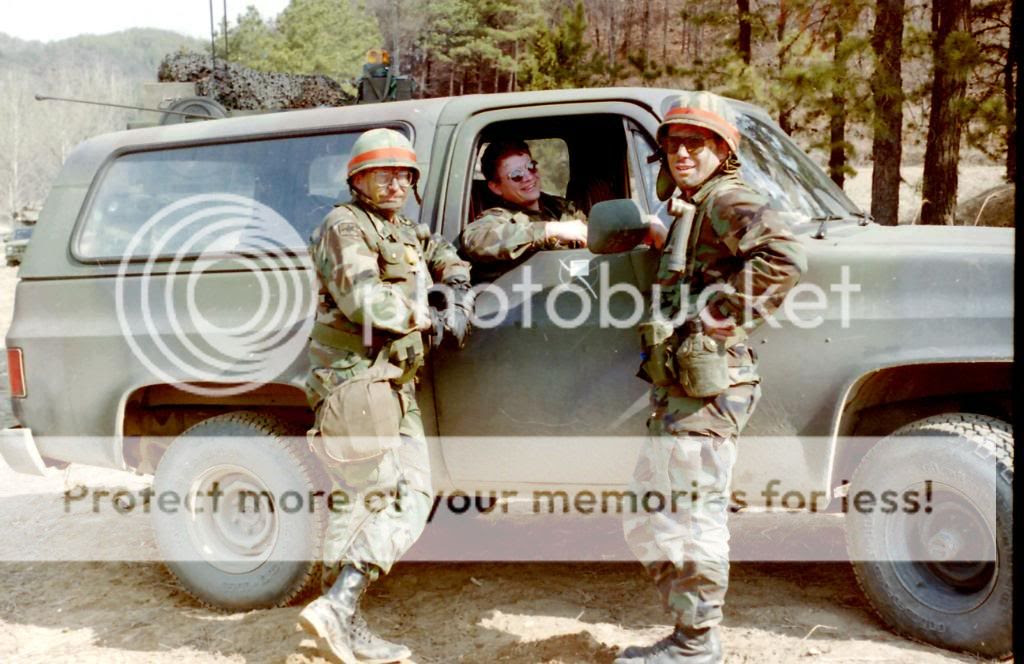
Chevrolet Blazer in use by the U.S. Army, in this case the 3d Bn, 49th FA, Wyoming Army National Guard, in South Korea. It's odd to think that this class of vehicle, which basically started off as a military vehicle, had a return, albeit a not too successful one, to military service.
The Blazer was such a successful vehicle that soon there were others in its class. Ford, which had a contender in the Jeep market which was very much loved, the Bronco, dumped it in favor of a larger Blazer sized vehicle, still called the Bronco. Dodge, which of course had a military vehicle in this class as long ago as 1940, came back out with one based on its 1/2 ton short box pickup frame, calling it the Ram Charger. By the early 1980s, Ford, Chevrolet and Chrysler were all competing in this class, and International and Chevrolet were still competing in the carryall class, Dodge having dropped out.
In the meantime, other manufacturers had not been idle. Toyota had come out with a stretched Land Cruiser, and entered the field, by the 1960s. Land Cruiser had as well, but it's temperamental expensive 4x4 was never really popular in the US, so that variant was rarely seen. International Harvester, which had competed in the Jeep class with its Scout, came out with a new larger variant of the Scout which also competed in this smaller, but not Jeep sized, class. Jeep itself would attempt to enter it from time to time, but was never successful in really figuring it out.

Chevrolet Blazer in use by the U.S. Army, in this case the 3d Bn, 49th FA, Wyoming Army National Guard, in South Korea. It's odd to think that this class of vehicle, which basically started off as a military vehicle, had a return, albeit a not too successful one, to military service.
By the late 1980s, this latter class, the smaller, but not 1/4 ton, 4x4 market really took off. Nissan entered the class with its rugged Pathfinder. Toyota, already in the class, came out with an additional vehicle in it called the Four Runner. Mazda entered it as well. Seeing what was going on, Chevrolet abandoned its trailblazing full size Blazer in favor of a smaller model in this class, also called the Blazer.
And then, something happened.
Somehow these vehicles quite being what they were, which was offroad vehicles, and simply became panel trucks, with 4x4, once again.
How it happened isn't clear, but whole class of rugged personal 4x4s began to evaporate. The Bronco disappeared. International quit making personal vehicles. And the small SUVs increasingly became large 4x4 cars, but not really trucks.
Some of these vehicles are still around in one form or another, but only some. The Jeep class is principally occupied by Jeep, unless a person is so well off they can afford a Mercedes or Land Rover. The mid sized SUV still sees a rugged Toyota class vehicles, and Jeep has finally figured it out, virtually dominating the field now with its four door Jeep. General Motors still makes a Suburban class vehicle and a Blazer sized vehicle, but both vehicles now are nearly luxury vehicles, not the field vehicles they once were, although they can still do the back country and come with off road options.
People will buy, of course, what they want.So the manufacturers can't be blamed for producing what they do. But the evolution is an interesting one.





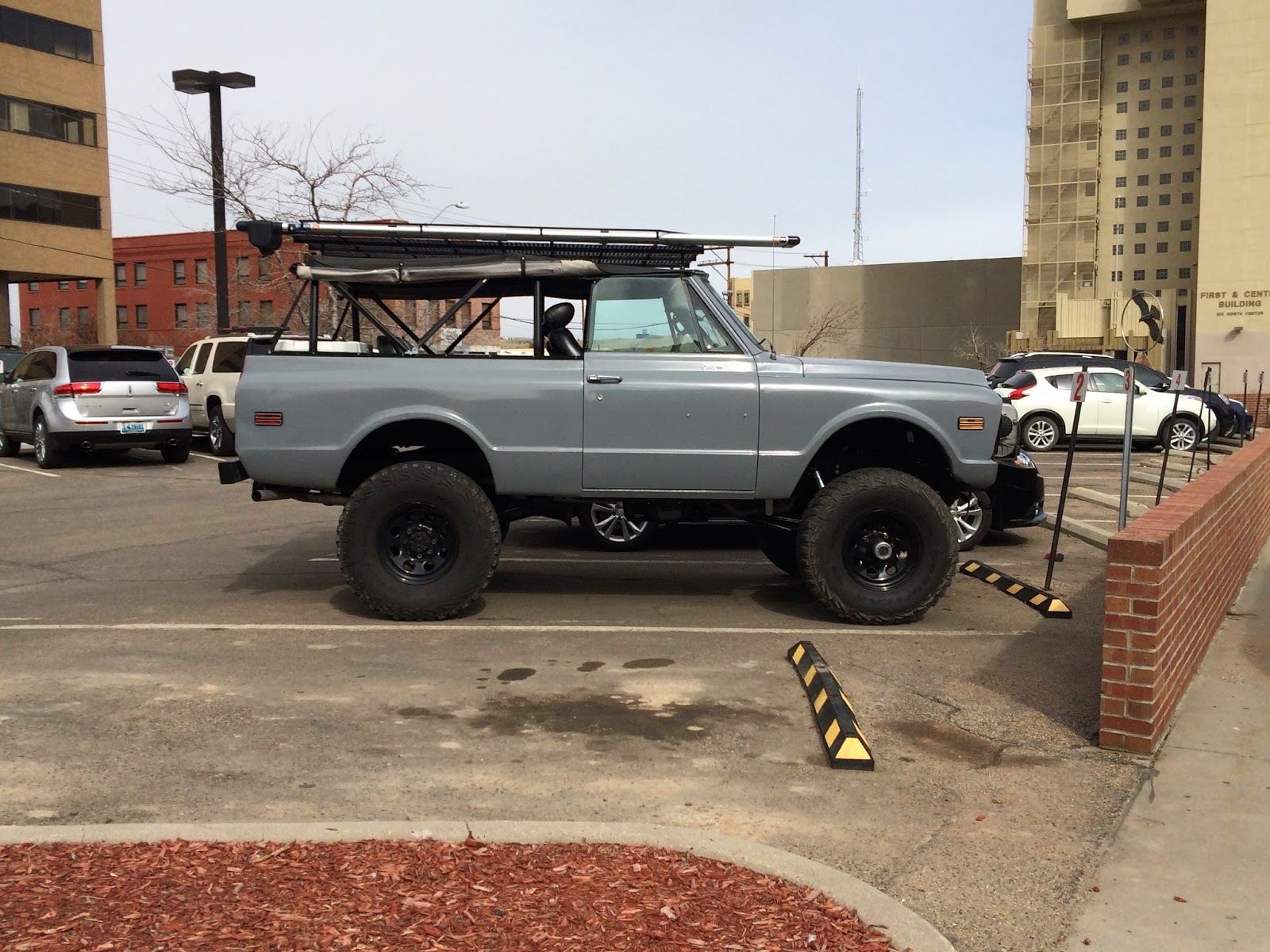



No comments:
Post a Comment